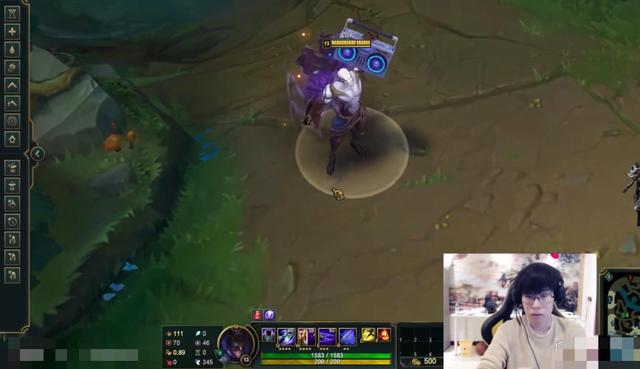学习小学英语基础语法资料大全(小学初级英语语法知识整理)
我国的小学生从小学就开始学习语法,从效果上来看属实一般,很多同学到了初中,高中,在学语法时还直摇头。这在一方面反应了语法知识的复杂性,难掌握,另一方面也反映了我们英语语法教学是有需要反思进步的方面的。一般而言,语法知识的学习是一个一层一层累积的过程,小学初中学不好,高中学起来就非常困难。因此哪怕是硬背,小编也推荐大家小学时就开始背熟,毕竟小学的语法知识相对较少,没那么复杂。等到高中再背就可能花费更大的力气也没有好的效果。这篇文章就是针对语法基础不好的同学进行的初级语法知识整理,使用手机即可方便背诵。

1.陈述句
(1)肯定句:是指用肯定的语气来陈述的句子,如:
I’m a student. She is a doctor. She works in a hospital.
译:我是一名学生。她是一位医生,她在医院工作。
There are four fans in our classroom. He will eat lunch at 12:00. I watched TV yesterday evening.
译:我们教室有四个风扇。他会在十二点吃午餐。我昨天晚上看电视了。
(2) 否定句:含有否定词或表示否定意义词的句子,如:
I’m not a student. She is not (isn’t) a doctor.
译:我不是一名学生。她不是一位医生。
She does not (doesn’t) work in a hospital. There are not (aren’t) four fans in our classroom.
译:她不在医院工作。我们教室美语四个风扇。
He will not (won’t) eat lunch at 12:00. I did not (didn’t) watch TV yesterday evening.
译:他不会在十二点吃午餐。我昨天晚上没看电视。
2. 疑问句
一般疑问句:是指询问事实的句子,此类句子必须用“yes”,或“no”来回答。
特殊疑问句:以特殊疑问词(what , where , who , which , when , whose , why , how等)开头引导的句子。此类句子应该问什么就答什么,不能用“yes 、no”来回答。
3.There be句型
There be 句型与have, has的区别
(1)、There be 句型表示:在某地有某物(或人)
(2)、在there be 句型中,主语是单数,be 动词用is ; 主语是复数,be 动词用are ; 如有几件物品,be 动词根据最*近be 动词的那个名词决定。
(3)、there be 句型的否定句在be 动词后加not , 一般疑问句把be 动词调到句首。
(4)、there be句型与have(has) 的区别:there be 表示在某地有某物(或人);have(has) 表示某人拥有某物。
(5)、some 和any 在there be 句型中的运用:some 用于肯定句, any 用于否定句或疑问句。
(6)、and 和or 在there be句型中的运用:and 用于肯定句, or 用于否定句或疑问句。
(7)、针对数量提问的特殊疑问句的基本结构是:
How many 名词复数 are there 介词短语?
How much 不可数名词 is there 介词短语?
(8)、针对主语提问的特殊疑问句的基本结构是:
What’s 介词短语?
4.现在进行时
表示正在发生的事情或进行的动作,常与now,listen,look等词连用,结构是主语 be动词(am, is, are) 动词ing.
如:(1)It is raining now.
译:外面正在下雨
(2)It is six o’clock now.
译:现在6点了
(3)My parents are reading newspapers in the sitting room.
译:我父母正在客厅看报纸
(4)Look! The children are having a running race now.
译:看!孩子们正在赛跑
问句将be动词移前,否定句在be动词后 not.
5.一般现在时
表示经常反复发生的事情或动作,常与often, usually, sometimes, always, every day(week year…) on Sundays等词连用。
结构是主语 动词原形;当主语为第三人称单数即he,she, it, Tom, my mother, the boy等词时,动词后加s或es.
如:We have an English lesson every day.
译:我们每天都要上英语课
Do the boys run faster than the girls? Yes, they do.
译:男孩比女孩跑的快吗?是的
问句借助于do, does否定句借助于don’t, doesn’t,后面动词一定要还原。
6.一般过去时
表示发生在过去的事情或存在的状态,常与just now; a moment ago; … ago; yesterday; last ( week; month; year; Monday; weekend); this morning等词连用。
结构是主语 be动词的过去式(was; were)或主语 动词的过去式。
注意:be动词与动词过去式不可同时使用。
如:(1)My earphones were on the ground just now.
译:我的耳机刚刚还在呢。
(2)Where were you last week? I was at a camp.
译:你上个星期去哪了?我去野营了
(3)What did you do yesterday? I visited a farm
译:你昨天去干嘛了?我去参观农场了。
问句有be动词将be动词移前,没有be动词借助于did,后面动词还原;
否定句有be动词在后面加not,没有借助于didn't后面动词还原。
7.一般将来时
表示将要打算发生的事情或动作,常与tomorrow, next week(year; Tuesday…), this week( weekend ;evening; afternoon;…)today等词连用。结构是主语 be(am, is, are) going to 动原或主语 will 动原。
如:(1)What are you going to do tomorrow? I am going to have a picnic.
译:你明天要去干嘛?我要去野餐。
(2)The childre are going to have a sports meeting next week.
译:孩子们下个星期将参加运动会。
(3)Tom will/is going to see a play with his father this evening.
译:Tom今晚将和父母去看演出。
问句将be动词或will移前;否定句在be动词或will后加not.
8.情态动词
can; can’t; should; shouldn’t; must; may后一定加动词原形。
如:(1)The girl can’t swim, but she can skate.
译:女孩不会游泳,但是会滑冰
(2)Don’t talk in class, you should listen to the teacher carefully.
译:不要再课上说话,你应该认真听老师讲。
9.祈使句
肯定祈使句以动词原形开头;否定祈使句以don’t加动词原形开头。
如:(1)Open the box for me ,please.
译:请为我打开盒子。
(2)Liu Tao! Please get up earlier tomorrow.
译:刘涛,明天请早点起床!
(3)Don’t walk on the grass!
译:不要在草地上走!
(4)Helen! Don’t climb the tree,please.
译:海伦!不要爬树。
10.go的用法
去干嘛用go 动词ing
如: go swimming; go fishing;
go camping; 去露营
go running;去跑步
go skiing;去滑雪
go rowing:去划船
11.比较
than 前用比较级;as…as之间用原级。
如:(1)My mother is two years younger than my father.
译:我妈比我爸年轻两岁。
(2)Liu Tao jumps as far as Ben.
译:刘涛跳得和本一样远。
12.喜欢做某事
用like 动词ing或like to 动原。
如: (1)Su Yang likes growing flowers.
译:苏阳喜欢种花。
(2)The children like to play with lanterns at Spring Festival.
译:孩子们喜欢在春节去玩花灯。
13.想要做某事
用 would like to 动原或want to 动原。
例:I’d like to visit the History Museum.=I want to visit the History Museum
14.some
用于肯定句中,在否定句和问句中改为any,但当表示委婉语气时仍用
如:Can I have some writing paper? Would you like some orange juice?
译:我能拿些写作纸吗?你想要一些橙汁吗?
15.代词
人称代词主格做主语用一般放在句首或动词前,主格分别是 I you he she it we you they。
宾格做宾语用,一般放在动词或介词后
如:Open them for me. Let us …, join me等。
宾格分别是me you him her it us you them。
形容词性物主代词放在名词前,不能单独使用,分别是my your his her its our your their
名词性物主代词相当于形物加名词,它只能单独使用后面不好加名词,分别是mine yours his hers its ours yours theirs。
16.介词
介词后要么不加动词,加动词只能加动词ing形式
如:be good at running;
do well in jumping;
17.时间介词
季节前,月份前用介词in
如:in summer;in March
具体的哪一天如星期几,几月几日用介词on
如:on Saturday; on the second of April; on Wednesday morning
在几点钟前用介词at
如: at a quarter to four;
只在上下午晚上用in
如:in the morning/ afternoon/ evening;
但在夜间用at night。
另:季节,月份和星期前不好加the.
18.名词复数构成的方法
有规则的有:
(1)直接在名词后加s
如orange—oranges; photo—photos;
(2) 以x, s, sh, ch 结尾的加es
如:box—boxes; glass—glasses; waitress—waitresses; watch—watches;peach--peaches
(3) 以辅音字母加y结尾的改y为i加es
如:study—studies;library—libraries; hobby—hobbies; family—families;
(4)以f, fe结尾的改f, fe 为v+es如:knife—knives; thief—thieves(注:以o结尾的我们学过的只有mango加es, mango—mangoes其余加s,)
不规则的有:
man—men; woman—women; people—people; child—children
19.动词第三人称单数的构成
(1)直接在动词后加s
如:run—runs; dance—dances
(2)以s,sh,ch,o结尾的加es
如:do—does;go—goes;wash—washes;catch—catches
(3)以辅音字母加y结尾的改y为i加es
如:study—studies; carry—carries;
20.现在分词的构成
(1)直接在动词后加ing
如:sing—singing; ski—skiing;
(2)双写词尾加ing
如:swim—swimming; jog—jogging;run—running;
(3)以不发音的e结尾的去e加ing
如:ride—riding; dance—dancing; make—making;
21.规则动词过去式的构成
(1)直接在动词后加ed
如:clean—cleaned; milk—milked; play—played;
(2)以e结尾的直接加d
如:dance—danced; taste—tasted;
(3) 以辅音字母加y结尾的改y为i加ed
如:study—studied;carry—carried;
(4)双写词尾加ed
如:stop—stopped; jog—jogged;
不规则的有:am,is—was; are—were; do,does—did; have,has—had; go—went; meet—met; sit—sat; see—saw; get—got; tell—told; run—ran; come—came; steal—stole; read—read;
22.形容词副词比较级的构成
规则的:
(1)直接在形容词或副词后加er
如;small—smaller; low—lower;
(2)以e结尾的加r
如:late—larer;
(3)双写词尾加er
如:big—bigger; thin—thinner; fat—fatter;
(4) 以辅音字母加y结尾的改y为i加er
如:heavy—heavier; early—earlier;
不规则的有:
good, well—better(最高级为best); many, much--- more(最高级为most); far---farther;
23.比较级
注意只有同类事物才可进行比较。
如:My eyes are bigger than hers.
译:我的眼睛比她的眼睛大
Your school bag is heavier than mine.
译:你的书包比我的重。
My computer is nicer than Nancy’s.
译:我的电脑比南希的好。
My brother is stronger than me.
译:我的兄弟比我强壮。
24.have, has
表示某人有(has用于第三人称单数);There is/ are;
There was/ were 表示某地存在有
注意There be 句型的就近原则
单数或不可数用there is /was;
复数用there are/ were.
25.本身就是复数的词
眼镜glasses; 耳机earphones; 鞋shoes;裤子trousers等词本身是复数。
如:My glasses were on the chair just now.
但如果表示这双,这副,一双的时候用单数
如:There is a pair of chopsticks on the plate. This pair of earphones is for you.
26.一个的用法
a用于辅音前不是辅音字母前;an 用于元音前不是元音字母前。
如:There is an ’s’, a ‘t’, a ‘u’, a ‘d’ ,an ‘e’, an ‘n’,and a ‘t’ in the word ‘student’.
27.时间表示法
有两种:
(1)直接读时钟和分钟。
如6:10读成 six ten; 7:30读成seven thirty; 8:45读成eight forty-five;
(2)用to与past表示。
在半小时包括半小时以内用几分past几点
如:6:10读成ten past six; 7:30读成half past seven;
过了半小时用下一个钟点差几分
如7:45读成a quarter to eight; 9:50读成ten to ten;
28.基数词变序数词的方法
基变序有规律,结尾加上th; 一二三特殊例,结尾字母t、d(即first, second, third);
八去t, 九去e, ve要用f替(即eigh—eighth; nine—ninth; five-- fifth ;twelve—twelfth);
ty改y为ie后加th别忘记(即整十数如twenty—twentieth;forty—fortieth);
几十几十位为基个位为序(如第二十一为twenty-first)。
另外强调序数词前一定要加the。
29.日期的表示法
用the 序数词 of 月
如:三月三日 the third of March;
十二月二十五日 the 25th of December.
30.both 表示两者都
如:My parents are both teachers.
译:我父母都是老师。
all表示三者以上都
如:The students are all very excited.
译:学生们都非常激动
31.节日的表示法
有day的节日前用on.
没有day的节日前用at,
如:at Christmas; on Christmas Day; at New Year; on New Year’s Day.
32.动词还原的用法
前面用了do, does did, don’t, doesn’t didn’t后面动词要还原。
如:Did she watch TV last night?
Helen doesn’t like taking photos.
译:海伦不喜欢照照片。
33.让某人做某事
用let sb后加动词原形
如:Let’s water the flowers together.
是该做…的时候了用It’s time for 名词或It’s time to 动原。
帮助某人做某事是help sb with sth
如:帮我学英语是 help me with my English
以上就是小学语法知识的重要内容,在对书本整个整理过程中难免有遗漏或有失偏颇的地方,还请大家谅解。最后一点小建议,背诵可以结合语法应用的具体实例,把实例也就是句子背会会减轻背诵的负担。
本文作者:久伴英语,点击左下方【了解更多】,可获得更多同类资料!
,免责声明:本文仅代表文章作者的个人观点,与本站无关。其原创性、真实性以及文中陈述文字和内容未经本站证实,对本文以及其中全部或者部分内容文字的真实性、完整性和原创性本站不作任何保证或承诺,请读者仅作参考,并自行核实相关内容。文章投诉邮箱:anhduc.ph@yahoo.com






